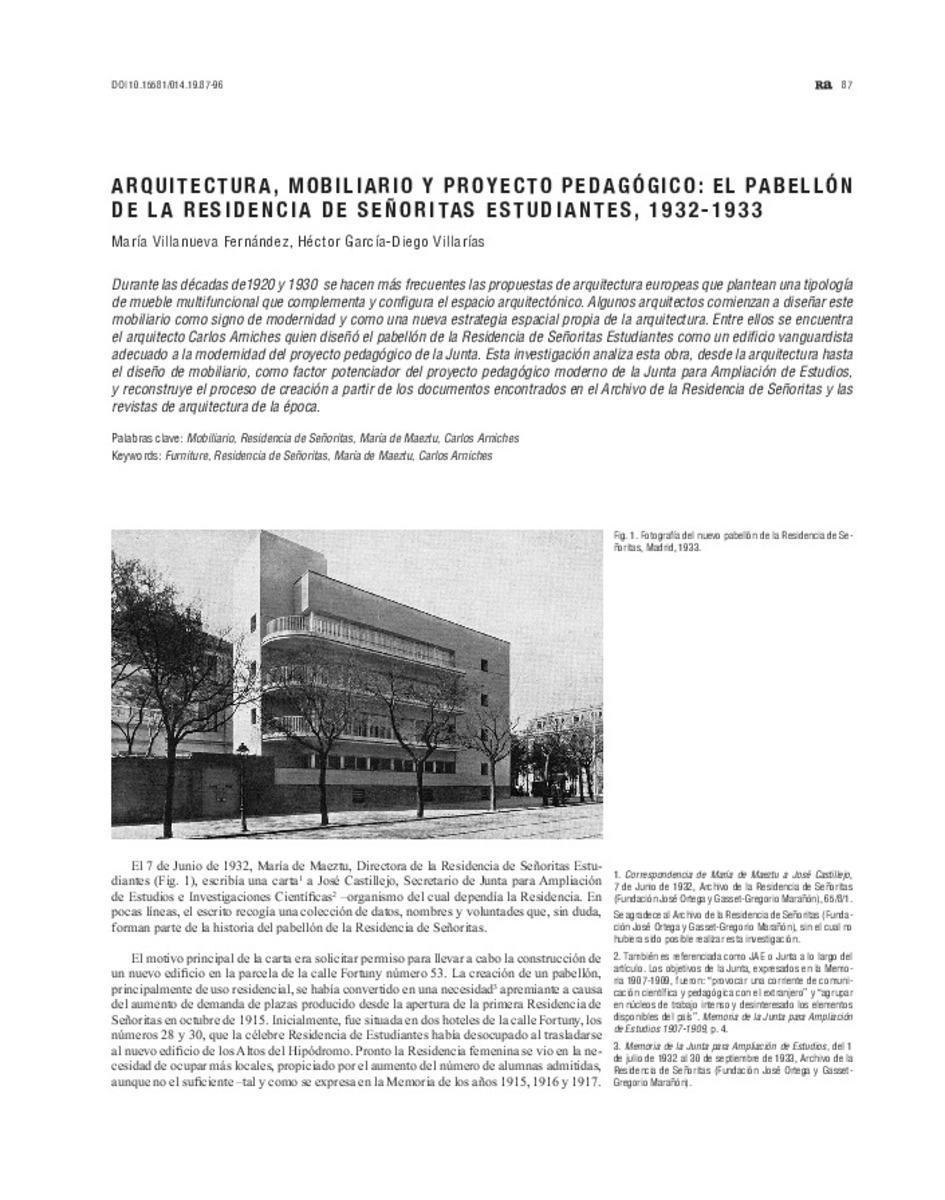Arquitectura, mobiliario y proyecto pedagógico: El pabellón de la Residencia de Señoritas Estudiantes, 1932-1933
Other Titles:
Architecture, furniture and educational project: The pavilion of the Residence of Young Female Students, 1932-1933
Keywords:
Mobiliario
Residencia de Señoritas
María de Maeztu
Carlos Arniches
Furniture
Residencia de Señoritas
María de Maeztu
Carlos Arniches
Publisher:
Servicio de Publicaciones de la Universidad de Navarra
Citation:
Villanueva-Fernández, M. (María); García-Diego Villarías, Héctor. "Arquitectura, mobiliario y proyecto pedagógico: El pabellón de la Residencia de Señoritas Estudiantes, 1932-1933". Ra. Revista de Arquitectura. 19, 2017, 87 - 96
Statistics and impact
0 citas en

0 citas en

Items in Dadun are protected by copyright, with all rights reserved, unless otherwise indicated.







